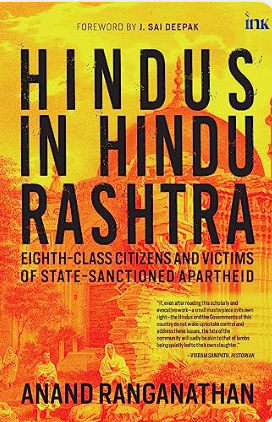Book Review: “Hindus in Hindu Rashtra” by Anand Ranganathan


This book is essential reading for every conscientious follower of the dharmic path. Disregard it at your own risk, especially if you are concerned about the survival of our civilization. Even those acquainted with Dr. Anand Ranganathan’s rapid-fire 30-second articulations should not assume they’ve heard it all or know it all. While you may have encountered fragments of his ideas in various discussions, this succinctly written, compact book provides a faster route to connect the dots and present a broader and deeper perspective for those with engaged minds.
DISCLAIMER: The author is solely responsible for the views expressed in this article. The author carries the responsibility for citing and/or licensing of images utilized within the text.
